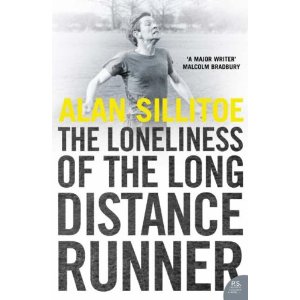Geographically Harrogate is a town in North Yorkshire situated 12 miles from Leeds. It is best known for its Spa facilities and Betty’s Tea Rooms – a town also immortalised by Alan Bennett in the television programme, Dinner at Noon (BBC, 1988) which portrayed the staff and guests at the Crown Hotel in Harrogate.
Given this, Harrogate is not a town people associate with football, yet it is in fact home to two clubs, Harrogate Town and Harrogate Railway Athletic. Harrogate Town is the elder statesman having been founded in 1914, whilst Railway came along in 1935. Town also have the edge in terms of League status over their rivals in that they play in the Blue Square Conference North, whilst Railway ply their trade in the Evo-Stik First Division North.
I’ve never been to either of the grounds, but had the choice this weekend to visit one of them, as both Harrogate clubs were at home. Town hosted AFC Telford United in the FA Trophy whilst Railway had a League fixture against Trafford. In the end I opted for a visit to Station View to watch Harrogate Railway v Trafford.
In terms of history the club was formed by workers at the Starbeck LNER depot, initially joining the local Harrogate League. The 1950’s saw the club progress through the West Yorkshire League to the Yorkshire League winning the West Yorkshire Football League Division Two Championship in 1950–51. In 1953 they made the Second Round proper of the FA Amateur Cup going out 3-2 at Harwich & Parkstone. Further success was achieved in 1957-58 when Railway were promoted from Yorkshire League Division Two.
However, in 1959 the locomotive sheds closed which affected finances as many of the workers and players, had to leave the area. Nevertheless, the club battled on through the sixties and they almost repeated their FA Amateur Cup exploits of the fifties when they made the First Round proper in 1961 only to lose 4-2 at Whitley Bay. The 1963-64 season Railway won promotion to the First Division of the Yorkshire League, which back then was just three steps from the Football League and got through to the Yorkshire League Cup Final, only to lose to Farsley Celtic after a replay.
The late sixties and the seventies became a real struggle and Railway had to pull out of the Yorkshire League and return to the Harrogate League in 1973. This gave the club time to re-group and they were back in the Yorkshire League in 1980 becoming founder-members of the newly created Northern Counties East League (NCEL) in 1982. In 1983-84 Railway won the NCEL Division Two North title and the League Cup with a 5-0 victory over Woolley Miners Welfare.
In the 1990-91 season Railway made their first major impression in the FA Cup when they reached the Fourth Qualifying Round, going out 3-1 at Chorley. As with many clubs at this level the nineties proved to be difficult times financially. However, in 1998-99 Railway won the NCEL First Division under David Fell, however he departed at the end of the same season, taking most of the side with him. New Manager Paul Marshall kept Railway in the Premier Division and was to mastermind two amazing back-to-back FA Cup adventures.
In 2001 Railway reached the Fourth Qualifying Round before a 3-2 defeat at home to Morecambe. Just a year later and Railway went even further. The Harrogate club gained a 2-1 win at Slough Town in the First Round proper and history beckoned. The draw for the Second Round produced a fairy-tale tie. Railway as the lowest-ranking club ever to reach this stage were drawn at home to Bristol City, then top of the Second Division and the highest-ranking club in the Second Round. Railway chose to host the game and with temporary stands erected at Station View, Sky TV broadcast the game around the world and the club was the focus of the football universe in December 2002. However, the dream ended there and Bristol City ran out winners 3-1. The season did bring silverware however; as the NCEL Presidents Cup was won as Railway beat Bridlington Town 7-2 on aggregate.
Success came again to Station View in 2005-06 as Railway won promotion to what was the UniBond Northern Premier League. In 2007–08 the town of Harrogate was gripped by FA Cup fever as Town and Railway met in the Fourth Qualifying Round. Railway emerged 2-1 winners, only to lose 3–2 to Mansfield Town in the Second Round proper, a fixture which was televised live on Match of the Day.
This season has been a strange one to say the least. Railway opened 2010-11 with a scoreless draw at home to Prescot Cables and three days later a thumping 6-2 away at Garforth Town. September was a terrible month as the Railway took just 1 point (at Ossett Albion) from 7 League games and found themselves bottom of the table. This dreadful run continued at the start of October, as two further home defeats occurred against strugglers Leigh Genisis and League front-runners Chester. Fortune turned with a 2-1 FA Trophy First Qualifying Round win at Ossett Albion and October ended with three more games unbeaten. A League point was won in a 2-2 draw at Witton Albion, followed by progress in the Presidents Cup (3-2 away at Durham City) and another away win at Romulus in the FA Trophy Second Qualifying Round. November and Railway simply couldn’t stop winning as League victories were obtained against Chorley, Durham City and Mossley, and a Cup double against Wakefield in the West Riding County Cup and Presidents Cup. The only blimp was exit from the FA Trophy at the hands of Nantwich Town.
That game took place on 20th November and proved to be the last action for Railway for three weeks. The heavy snow and wintry conditions hit the North hard and despite the thaw in the week beginning 6th December, the club was not confident the Station View Ground would be fit for play. However, incredibly the game against Trafford did take place.
If people are unsure of the financial struggles at this level of the football pyramid then the following should provide some enlightenment. Just 68 hardly souls braved the weather to watch this fixture. Every penny is crucial and so the recent postponements hit clubs hard. Given that Railway didn’t believe the fixture would go ahead they didn’t order any programmes for the game. They calculated that if the fixture went ahead it would cost less to suffer the League fine for not producing a programme on the day, than to go ahead with the expense of printing and then be stuck with them if the game was cancelled. It also impacted on the catering, as the crowd was informed before kick-off over the tannoy that there were no pies on sale, as they hadn’t been ordered as a precaution against the match being cancelled.
So to the game itself. The pitch was in remarkably good condition given the snow that had fallen in and around North Yorkshire in the proceeding weeks. The opening ten minutes were somewhat frantic as both sides struggled to get rid of the rustiness of not having played for three weeks. Railway settled first and took the lead in the 13th minute when Michael Duckworth broke down the right past his defender and crossed to the near post where Jon Maloney headed home. However, the lead lasted just three minutes as a stunning Chris Baguley strike ripped past Railway keeper Craig Parry to level the scores at 1-1. The score changed again in the 19th minute as the Trafford defence was split by a mis-hit pass from Liam Gray which fell to Andy Jackson, who lobbed the advancing Aaron Tyrer to restore Railway’s lead. Once again Trafford responded and just four minutes before half-time, were level at 2-2 with a goal from Jamie Baguley. So honours even in what was an entertaining opening forty five minutes.
Railways were quick to start in the second half and within a minute of the restart were back ahead, as Michael Duckworth drilled one past Parry to give the home side a 3-2 lead. Trafford fought back, but Railway looked the more likely to score as the game went on. Wayne Harratt thought he has sealed the points with a header, but was ruled out for off-side. So a win for the home team which see Railway in 12th position and continues their recent revival.
On my way out of the ground I noticed the club flag displaying the Railway badge which features not trains, but a beaver. A symbol representative of all those who worked so hard on the railways down the years, but also a fitting tribute to those today who work so tirelessly to keep Harrogate Railway Athletic going, both on and off the pitch.
The official website of Harrogate Railway Athletic FC can be found at: http://www.pitchero.com/clubs/harrogaterailwayathletic/
 During a twenty-five-year managerial career, Danny’s teams have won trophies, promotions, and celebrated last-gasp relegation escapes. Danny managed over a thousand games for Barnsley, Sheffield Wednesday, Bristol City, Milton Keynes, Hartlepool United, Swindon Town, Sheffield United, and Chesterfield. Prior to that he had an extensive playing career, pulling on the shirt for Wigan Athletic, Bury, Chesterfield, Nottingham Forest, Scunthorpe United, Brighton & Hove Albion, Luton Town, Sheffield Wednesday and Barnsley, as well as representing Northern Ireland.
During a twenty-five-year managerial career, Danny’s teams have won trophies, promotions, and celebrated last-gasp relegation escapes. Danny managed over a thousand games for Barnsley, Sheffield Wednesday, Bristol City, Milton Keynes, Hartlepool United, Swindon Town, Sheffield United, and Chesterfield. Prior to that he had an extensive playing career, pulling on the shirt for Wigan Athletic, Bury, Chesterfield, Nottingham Forest, Scunthorpe United, Brighton & Hove Albion, Luton Town, Sheffield Wednesday and Barnsley, as well as representing Northern Ireland. Life with the Robins and Beyond: The Geoff Merrick Story is the most anticipated book on any player ever to pull on the red shirt of Bristol City.
Life with the Robins and Beyond: The Geoff Merrick Story is the most anticipated book on any player ever to pull on the red shirt of Bristol City.